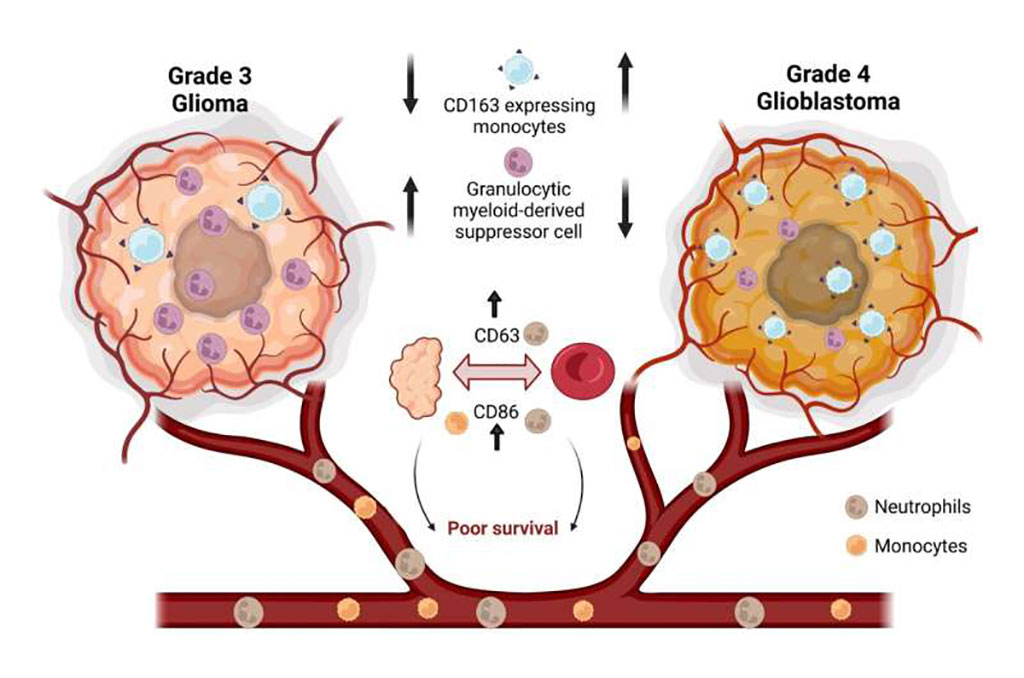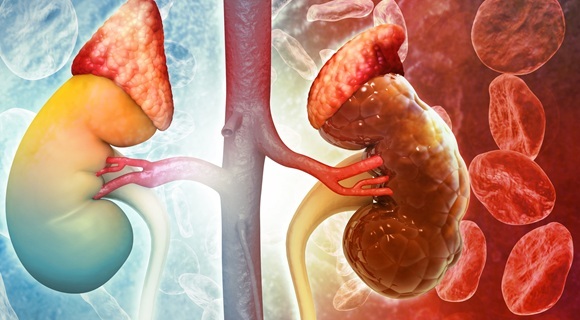Biomarkers Predict Disease Progression for Patients with Late-stage Brain Tumors
By LabMedica International staff writers
Posted on 29 Nov 2021
A team of Indian researchers has identified potential blood-based biomarkers that predict disease progression and survival times for patients with late-stage glioma-type brain tumors.Posted on 29 Nov 2021
A glioma tumor starts in the glial cells of the brain or the spine. Gliomas comprise about 30% of all brain tumors and central nervous system tumors, and 80% of all malignant brain tumors. These tumors are heavily infiltrated with immune cells of myeloid origin.

Image: A comparison of monocyte and neutrophil phenotype in grade III and grade IV gliomas (Photo courtesy of Jayashree V. Raghavan)
Previous studies have shown that high-grade gliomas have a higher proportion of alternatively activated and suppressive myeloid cells when compared to low-grade gliomas, which correlate with poor prognosis. However, the differences in immune cell phenotypes within high-grade gliomas (between grade III and grade IV or glioblastoma multiforme [GBM]) are relatively less explored, and a correlation of phenotypic characteristics between immune cells in the blood and high-grade tumors has not been performed. Additionally, myeloid cells of granulocytic origin present in gliomas remain poorly characterized.
Investigators at the Indian Institute of Science (Bangalore, India) and their collaborators addressed these questions through phenotypic characterizations of monocytes and neutrophils present in blood and tumors of individuals with glioblastoma or grade III IDH-mutant gliomas.
For this study, the investigators collected blood and tumor samples from patients with grade III and grade IV gliomas, and used a multi-color flow cytometry method to compare the numbers of specific immune monocytes and neutrophils in the samples.
Results revealed that neutrophils comprised a highly heterogeneous population among individuals with glioma, and were different from healthy controls. In addition, CD163 expressing M2 monocytes were present in greater proportions in GBM tissue when compared to grade III IDH-mutant glioma tissue, and a larger proportion of granulocytic myeloid-derived suppressor cells were present in grade III IDH-mutant gliomas when compared to GBM. The expression levels of the surface proteins CD86 and CD63 showed a high correlation between blood and tumor, which suggested that these may be used as possible markers for prognosis.
"Our pilot study suggests that we can potentially use two blood-based biomarkers present on immune cells to identify patients who might not perform well with particular treatment strategies," said senior author Dr. Siddharth Jhunjhunwala, assistant professor of biosystems science and engineering at the Indian Institute of Science. "What our study showed is that you do not need to look at these markers only in the tumors, you might be able to look at these just from the blood, and the clinician can make an assessment."
The study was published in the August 2, 2021, online edition of the journal OncoImmunology.
Related Links:
Indian Institute of Science














